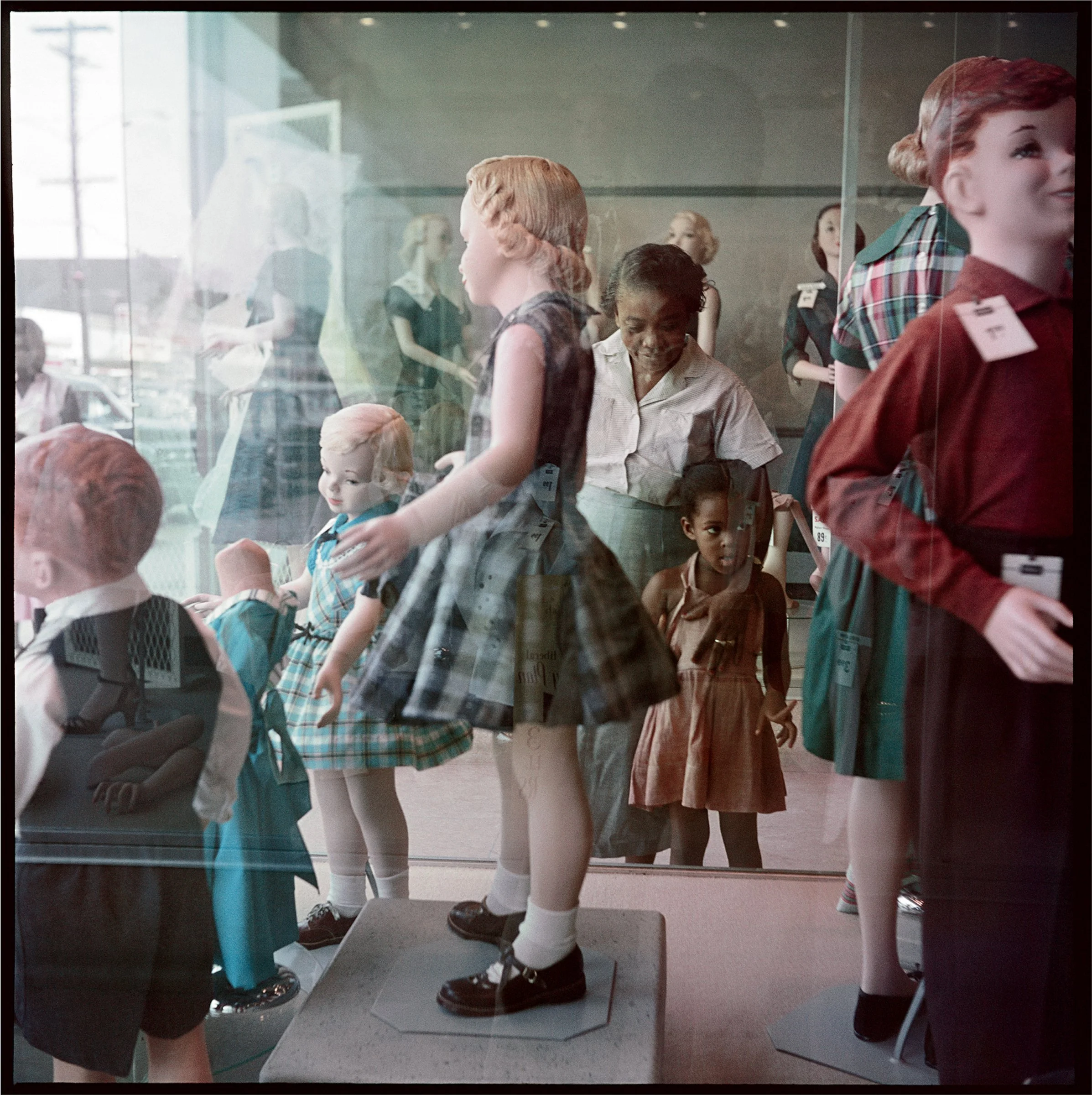Gordon Parks & Ella Watson: American Gothic | Minneapolis Institute of Art
Washington, D.C. Saturday afternoon, 7th Street and Florida Avenue, N.W. Library of Congress 2017765114, 1942
Written by Trip Avis
The phrase “American Gothic” is an intriguing pair of words. It combines two opposing aesthetics—wholesome American culture and a dark, eerie Gothic style; the latter evokes images of Romanesque castles, cathedrals, and novels by Mary Shelley. Moreover, it is often associated with the famous painting by Grant Wood, which features a pitchfork, a white A-frame house, and austere expressions. However, in 1942, a young Gordon Parks transformed this romanticized concept into something more realistic, personal, and relatable. He captured intimate moments from the life of an American woman, Ella Watson, along with her loved ones and neighbors. During that summer, Watson became his muse, and she came to embody a new conception of the phrase “American Gothic.” Parks' project notably included hardworking people of color who, before that point, had been relegated to the margins of photographic history.
Gordon Parks (American, 1912-2006), American Gothic, Washington D.C., 1942, gelatin silver print. Image courtesy of the Gordon Parks Foundation.
Parks opined, on the choice of name for his project, that “[...] I asked [Watson] about her life, what it was like, and so disastrous that I felt that I must photograph this woman in a way that would make me feel or make the public feel about what Washington D.C. was in 1942. [...] I said, ‘American Gothic’—that’s how I felt at the moment. I didn’t care about what anybody else felt. That’s what I felt about America and Ella Watson’s position inside America.” The arguable centerpiece of Parks’s project is an image of Watson standing before an American flag, broom in hand. The portrait is a new interpretation of Wood’s painting, sharing aesthetic elements like the wire-rimmed spectacles, serious expression, and a broom in place of the pitchfork, but with a Black woman as the subject. By capturing Watson in this famous and familiar pose, Parks posits Watson as a new American symbol.
Washington, D.C. Mrs. Ella Watson, a government charwoman dressing her grandchildren, 1942 Library of Congress 2017765095
While many of Parks's photographs with Watson convey a sense of severity, there is a warm undercurrent when we see her with her family. In Washington, D.C. Mrs. Ella Watson, a government charwoman dressing her grandchildren, 1942, Parks captures Watson in a tender and maternal moment. Seated before her two young grandchildren, Watson smiles gently as she attends to their needs. Other elements contribute to this domestic scene, like Watson’s floral apron and the collection of family photographs. She is a woman of many roles: a dedicated government worker, a respected church deaconess, and a loving grandmother. Parks’s project depicts other individuals in Mrs. Watson’s sphere, like Washington, D.C. Johnnie Lew, owner of the laundry under the apartment of Mrs. Ella Watson, a government charwoman, 1942. Lew, a young Asian-American man, looks to the camera with a smug, cool-guy expression, a cigarette pursed between his lips. Elements of Americana include a hand-held U.S. flag over his shoulder and a calendar depicting then-president Franklin Delano Roosevelt. Gordon Parks offers viewers insights into the lives of non-white Americans during a historical period rife with segregation and solid racial barriers.
Washington, D.C. Mrs. Ella Watson, a government charwoman, receiving anointment from Reverend Clara Smith during the “flower bowl demonstration,” a service held once a year at the St. martin’s Spiritual Church. Reverend Vondell Gassaway is the pastor (Ella Watson receiving a blessing and anointment from Reverend Smith; a second), 1942 Library of Congress 2017765153
Gordon Parks's photographic oeuvre is one of the most resonant and culturally revealing in American history, and his collaborations with Ella Watson are no exception. Parks welcomes us into Watson’s private world, showing us the grace and silent dignity of a woman who exudes American virtues and embodies a new ‘American Gothic.’
On display at the Minneapolis Institute of Art between January 6, 2024 - June 23, 2024.
Washington, D.C. Dresser in the bedroom of Mrs. Ella Watson, a government charwoman, 1942 LOC 2017765109












